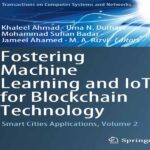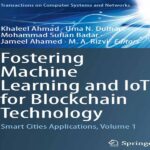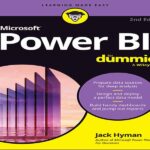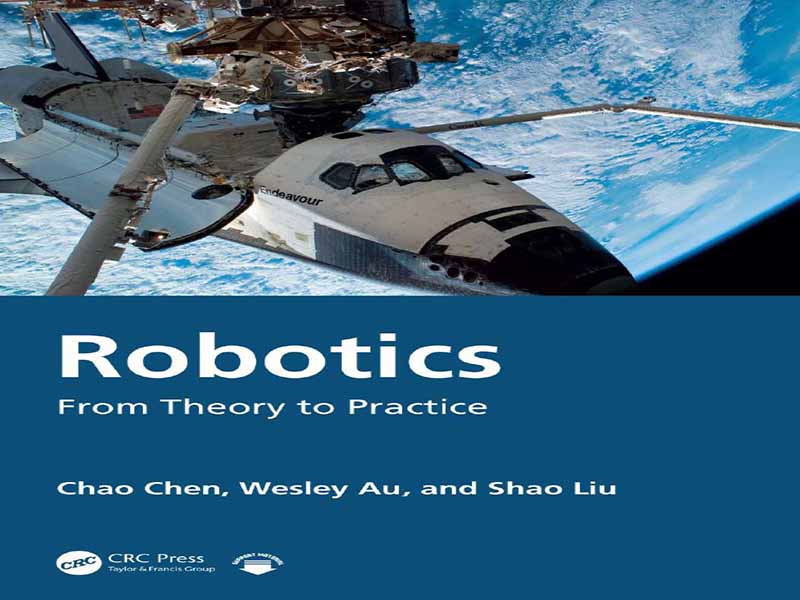- عنوان کتاب: Robotics From Theory to Practice
- نویسنده: Chao Chen, Wesley Au, and Shao Liu
- حوزه: رباتیک
- سال انتشار: 2025
- تعداد صفحه: 459
- زبان اصلی: انگلیسی
- نوع فایل: pdf
- حجم فایل: 15.0 مگابایت
رباتیک موضوع جذابی است که اغلب کنجکاوی عمیق ما را برمیانگیزد و ما را به فکر کردن در مورد چگونگی ساخت رباتهایی برای بهبود زندگی روزمره مردم وامیدارد. خوشبختانه، من از سال ۲۰۰۸ فرصت تدریس رباتیک در رشته رباتیک و مکاترونیک در دانشگاه موناش را داشتهام. دانشجویان من سوالات جالب زیادی پرسیدند که به طور قابل توجهی در این کتاب درسی نقش داشتند. به عنوان مثال، یک ماتریس چرخش یا تبدیل از فریم ۱ تا فریم ۲ در برخی از کتابهای درسی شرح داده شده است. با این حال، ماتریس چرخش یا تبدیل دقیق از فریم ۲ تا فریم ۱ در سایر کتابهای درسی شرح داده شده است. توضیحات واضح اصول اساسی برای چنین سوالاتی، یادگیری دانشجویان را بهبود بخشیده و این کتاب درسی را غنیتر کرده است. علاوه بر دانشجویان کلاس رباتیک من، تیم Monash Nova Rover نیز از این کتاب درسی (نسخه قبلی) به عنوان یک کتابچه راهنما برای توسعه بازوهای رباتیک روی مریخنوردهای خود استفاده کردهاند. این تیم یک تیم دانشجویی کارشناسی است که در سال ۲۰۱۷ تأسیس شد و هدف آن توسعه مریخنوردها و ماهنوردها برای مسابقات مختلف است. به عنوان سرپرست دانشگاهی و بنیانگذار این تیم دانشجویی، مشاهده کردهام که این تیم به تدریج و با موفقیت، با پیادهسازی سینماتیک رو به جلو، سینماتیک معکوس، برنامهریزی مسیر و کنترل از راه دور، رباتهای مکانیکی را برای مسابقات توسعه داد. این تیم در مسابقات دانشگاهی مریخنورد ۲۰۲۲ و ۲۰۲۳ در یوتا مقام دوم و در مسابقات مریخنورد استرالیا ۲۰۲۱، ۲۰۲۲ و ۲۰۲۳ مقام اول را کسب کرد. این کتاب درسی به طور مشترک توسط دانشجویان دکترای سابق من، دکتر وسلی آئو و دکتر شائو لیو، نوشته شده است. دکتر وسلی آئو پیشینه قوی در رباتیک و برنامهریزی مسیر در فضاهای کاری پیچیده و پویا دارد و دانش و تخصص خود را در زمینه اتوماسیون رباتیک پیشرفته برای تولید، هم در محیط دانشگاهی و هم در محیط صنعتی، در این کتاب درسی به ارمغان میآورد. او در پروژههای تحقیقاتی و صنعتی، از رباتهای نگهداری زیرساختهای حیاتی گرفته تا رباتهای کشاورزی، کار کرده است. او اکنون یک مهندس تحقیقات اتوماسیون در تحقیقات و فناوری بوئینگ استرالیا است که سیستمهای تولید پیشرفته را برای اتوماسیون تولید دقیق و با سرعت بالا در صنعت هوافضا طراحی میکند. دکتر شائو لیو، پژوهشگر آزمایشگاه من در دانشگاه موناش است. او تجربه و دانش گستردهای در طراحی، مدلسازی و تحلیل رباتیک دارد و تعدادی پروژه تحقیقاتی و صنعتی در زمینه رباتهای پزشکی، رباتهای تولیدی و رباتهای با اهداف خاص انجام داده است. به طور خاص، تخصص دکتر لیو در رباتهای نرم و سیستمهای عمومی کمتحرک، به گسترش پوشش این کتاب درسی فراتر از نظریهها و کاربردهای کلاسیک کمک میکند. هدف این کتاب درسی، پر کردن شکاف بین نظریههای رباتیک و کاربردهای دنیای واقعی در مدلسازی، تحلیل، برنامهریزی و کنترل رباتهای مکانیکی است. محتوا به سه بخش تقسیم شده است. بخش اول با معرفی اصول سینماتیک، برنامهریزی مسیر و کنترل، دانشآموزان سال آخر دبیرستان و دانشجویان سال سوم دانشگاه را هدف قرار میدهد. بخش دوم با معرفی مباحث کلیدی رباتیک، از جمله تبدیلهای فضایی، سینماتیک و دینامیک، و همچنین کنترل و برنامهریزی، دانشجویان سال آخر دانشگاه را هدف قرار میدهد که همچنین به عنوان منبع ارزشمندی برای متخصصانی که به رباتیک علاقهمند هستند و پیشینه مهندسی دارند، عمل خواهد کرد. بخش سوم، محققان رباتیک را از طریق بحث در مورد تحلیل پیشرفته و مطالعات موردی در رباتیک نرم، رباتیک پزشکی و رباتیک کشاورزی هدف قرار میدهد. در حالی که تعدادی کتاب درسی کلاسیک در رباتیک وجود دارد که ما به آنها احترام کامل میگذاریم، دلایل زیر ما را بر آن داشت تا این کتاب درسی را تدوین کنیم. اولاً، علاقه روزافزون دانشآموزان جوان به رباتیک، با افزایش تعداد تیمها و باشگاههای رباتیک در مدارس متوسطه و دانشگاههای سراسر جهان، وجود دارد. با این حال، واحدها یا دورههای رباتیک معمولاً در سال سوم یا چهارم در اکثر برنامههای درسی کارشناسی تدریس میشوند و مانع از کسب دانش لازم برای توسعه پروژههای رباتیک توسط دانشآموزان سال سوم میشوند. بخش اول این کتاب درسی تلاش میکند تا با معرفی دانش لازم با حداقل پیشنیازها، این شکاف را برطرف کند. علاوه بر این، تکمیل بخش اول، انتقال روان به مباحث پیشرفتهتر در بخش دوم را امکانپذیر میسازد. ثانیاً، سیستمهای رباتیک در زمینههای بسیار وسیعتری مانند پزشکی، کشاورزی و زیرساختها، فراتر از سناریوهای سنتی در کارخانهها، به کار گرفته شدهاند. بنابراین، بخش سوم تلاش میکند تا با گسترش فناوریهای رباتیک کلاسیکِ رباتهای صنعتیِ مرسوم در بخش دوم، این کاربردهای پیشرفته را معرفی کند. سوم، مفاهیم و قضایایی در رباتیک وجود دارد که ممکن است درک یا تجسم آنها دشوار باشد، به خصوص آنهایی که شامل سه یا چند بعد هستند. بنابراین، ما مثالهای جامعی را با کد MATLAB® گنجاندهایم که میتواند به تجسم و درک کمک کند و همچنین برای سیستمهای مختلف رباتیک قابل تعمیم باشد. امیدواریم که این ویژگی، ریاضیات و الگوریتمهای اساسی را ایجاد کند.
Robotics is a fascinating subject, which often triggers our deep curiosity and makes us think about how to create robots to improve people’s daily lives. Fortunately, I have had the opportunity to teach robotics in the Discipline of Robotics and Mechatronics at Monash University since 2008. My students asked many interesting questions, which contributed significantly to this textbook. For example, a rotation or transformation matrix is described from frame 1 to frame 2 in some textbooks; however, the exact rotation or transformation matrix is described from frame 2 to frame 1 in other textbooks. Clear explanations of the underlying principles to such questions improved the learning of students and enriched this textbook. Besides the students in my class of robotics, the Monash Nova Rover team has also utilised this textbook (earlier version) as a handbook to develop the robotic manipulators on their rovers. The team is an undergraduate student team founded in 2017, aiming at developing Mars rovers and Lunar rovers for various competitions. As the academic supervisor and founder of this student team, I have observed that the team gradually and successfully developed the robotic manipulators for competitions, by implementing forward kinematics, inverse kinematics, path planning, and remote control. The team won Second Place in the 2022 and 2023 University Rover Challenges in Utah, and First Place in the 2021, 2022, and 2023 Australian Rover Challenges. This textbook is co-authored by my former PhD students, Dr Wesley Au and Dr Shao Liu. Dr Wesley Au has a strong background in robotics and path planning in complex and dynamic workspaces, and brings his knowledge and expertise in cutting-edge robotic automation for manufacturing into this textbook in both an academic and industrial setting. He has worked in both research and industry-led projects, ranging from critical infrastructure maintenance robots to agricultural robots. He is now an automation research engineer at Boeing Research and Technology Australia, designing advanced production systems for the automation of precise and high-rate manufacturing in the aerospace industry. Dr Shao Liu is a Research Fellow in my lab at Monash University. He has extensive experience and knowledge in robotic design, modelling, and analysis, and has conducted a number of research projects and industry projects in medical robots, manufacturing robots, and special-purpose robots. In particular, Dr Liu’s expertise in soft robots and general underactuated systems helps extend the coverage of this textbook beyond classic theories and applications. This textbook aims to bridge the gap between theories in robotics and real-world applications in modelling, analysis, planning, and control of robotic manipulators. The contents are divided into three parts. The first part targets senior secondary school students and junior university students, by introducing the basics of kinematics, trajectory planning, and control. The second part targets senior university students, by introducing the key topics of robotics, including spatial transformations, kinematics and dynamics, as well as control and programming, which shall also serve as a valuable source to professionals who are interested in robotics and have backgrounds in engineering. The third part targets the researchers in robotics, through the discussions of advanced analysis and case studies in soft robotics, medical robotics, and agricultural robotics. While there exist a number of classic textbooks in robotics to which we pay full respect, the following reasons motivated us to develop this textbook. Firstly, there is a growing interest of young students in robotics, with an increased number of robotics teams and clubs in secondary schools and universities around the world. However, robotics units or courses are usually taught in the third or fourth year in most undergraduate curricula, preventing junior students from obtaining the necessary knowledge to develop their robotics projects. Part I of this textbook attempts to tackle this gap, by introducing necessary knowledge with minimum prerequisites. Further, completing Part I will enable a smooth transition to more advanced topics in Part II. Secondly, robotic systems have been applied to much broader fields such as medicine, agriculture, and infrastructure, beyond traditional scenarios in factories. Therefore, Part III attempts to introduce these advanced applications by extending the classic robotic technologies of conventional industrial robotic manipulators in Part II. Thirdly, there are concepts and theorems in robotics that may be difficult to understand or visualise, particularly those involving three or more dimensions. Therefore, we have included comprehensive examples with MATLAB® code, which can assist in the visualisation and understanding, and also be generalised for various robotic systems. We hope that this feature will make the fundamental mathematics and algorithms more interesting, insightful, and engaging for the readers. The contents of this textbook are summarised as follows. Part I introduces the basics of planar robots for simple tasks through modelling, planning, and executing, from Chapters 1–4. Chapter 1 serves as an introduction to the field of robotics and our textbook. It starts with a brief history of robots in industrial applications. Next, commonly used robot architectures are discussed, including their degrees of freedom (DoF), properties of motion, and usual applications. This chapter also includes a summary of the topics discussed, along with their per-chapter allocations in the textbook. Chapter 2 tackles the problem of modelling a planar robotic manipulator. Theoretical fundamentals are presented for both the kinematic and the force domains, covering transformations in the planar space, kinematics, velocity analysis, Jacobian, statics, and robot workspace. Chapter 3 presents the methods to compute a valid trajectory for the planar robotic manipulator to execute. Two approaches are presented: polynomial interpolation and cubic splines. Additionally, trajectory generation in both the joint space and the task space is discussed. Chapter 4 introduces the basics of control schemes, including open-loop control, closedloop control, and pulse width modulation. Various controllers realising the closed-loop control schemes are also presented. Part II covers general transformation, kinematics, dynamics, path planning, programming, and control of spatial robots from Chapters 5–15. Chapter 5 deals with spatial transformation. The definition of robot pose, i.e., position and orientation, is given. Commonly adopted kinematic descriptions are introduced, with fixed angles and Euler angles in the body part of the chapter, and angle-axis and quaternion in the appendix of this chapter. Both the forward and the inverse problems are discussed for each description. Chapter 6 is dedicated to the forward kinematics of serial robotic manipulators based on the Denavit-Hartenberg method. The step-by-step implementation of the method is introduced through the analysis of robots with revolute and prismatic joints, a spherical robot wrist, the PUMA robot, and a cylindrical robot. Chapter 7 focuses on solving the inverse kinematics problem of serial robotic manipulators. Firstly, trigonometric functions that are commonly used to solve inverse kinematics problems are introduced as the foundation. From there, examples with analytical solutions are given, followed by discussions on univariate polynomials and the dialytic method for the cases where analytical solutions are infeasible. Chapter 8 discusses the Jacobian matrix and velocity analysis. On the Jacobian side, the chapter starts with the definition of a Jacobian matrix, and discusses the end-effectorto- joint velocity and force mappings based on the Jacobian matrix. Workspace singularity analysis is also included. Moreover, the chapter extends the discussion on velocity to present velocity propagation. Chapter 9 covers the path planning methods and algorithms commonly used in robotics. The concept of configuration space is first introduced. Three path planners are discussed: the complete planners, the sample-based planners, and the potential field planners. The discussion further extends to detailed algorithms belonging to individual planners. Chapter 10 focuses primarily on the Robot Operating System (ROS). The operating paradigm and ROS components are discussed, followed by a case study. Chapter 11 is concerned with the Lagrangian dynamics of serial robotic manipulators. Inertia tensors and principal moments of inertia are first introduced. The chapter then presents a step-by-step guide on the implementation of the Lagrangian method. Chapter 12 is on the Newton-Euler dynamics of serial robotic manipulators. The outward propagation of velocity and acceleration, and the inner propagation of force and moment are described, followed by a step-by-step guide on the implementation of the Newton-Euler method. The chapter also includes an introduction to the twist, wrench, and their corresponding unified transformation matrix. Chapter 13 covers the basics of actuator control, where a linear controller is derived for a single actuator. Servo dynamics and the modelling of geared servo are presented. The chapter then moves on to fixed reference tracking with P, PD, and PID controllers, and concludes with the discussion on error dynamics. Chapter 14 focuses on computed torque control that takes into account nonlinearity in robot dynamics. The first part of the chapter discusses SISO and MIMO controllers, as well as controllers with gravity compensation, all in the joint space. The second part is on Lyapunov stability analysis. In the last part of the chapter, motion control in task space is presented. Chapter 15 introduces the force control strategy. The chapter starts with single-axis force control, and takes it one step further to discuss hybrid motion-force control, where natural and artificial constraints are presented. Finally, an overview of the impedance controller is provided. Part III investigates advanced robotic modelling and analysis, and the robotic applications in various fields, building upon the knowledge in Parts I and II, from Chapters 16–22. Chapter 16 is concerned with the mobility analysis of mechanisms. The chapter is divided into two parts. In the first part, the focus is the global mobility of parallel manipulators, where a method that reveals the mobility, property of motion, and actuation pattern based on the manipulator’s transformation matrix is presented. In the latter half, the focus is redirected to the analysis of local mobility based on Taylor’s theorem. Chapter 17 presents the investigation of the parameterisation of the orientation workspace of spherical manipulators. An approach based on quaternion is proposed, followed by the mapping to convert parameterisation based on other kinematics descriptions, such as Euler angles and angle-axis, to that based on quaternion to allow like-to-like comparisons among manipulators of different designs. Chapter 18 introduces a framework to conduct kinetostatic analysis of planar underactuated systems. The derivation of core kinetostatic constraints based on generalised coordinates, kinematic constraint equations, and Lagrange multipliers is presented, along with selection matrices and the constrained minimisation method to complete the formulation and obtain the solution. Two case studies are included, on a tendon-driven robot with a continuum backbone and an adaptive prosthetic finger, respectively. Chapter 19 covers the modelling of concentric tube robots, a soft robot featuring multiple concentrically arranged continuum superelastic tubes as the body. The modelling is divided into two parts: a robot-independent mapping developed based on the model of strands, and a robot-dependent mapping relating the actuator inputs and the prescribed shapes of individual tubes to the converged shape of the robot. Variations in the governing equations are presented, and their computational efficiencies are compared. Chapter 20 discusses efficient path planning of parallel manipulators. The chapter starts with the kinematics of parallel manipulators and highlights the challenge in their path planning due to complex singularity profiles. A path planning method is proposed, which actively exploits the workspace singularity loci as gates to connect singularity-free workspace regions for efficient configuration space path planning. A case study based on the 3-RRR manipulator is included and demonstrates successful assembly mode changes of the manipulator. Chapter 21 presents a novel remote centre of motion mechanism designed for minimally invasive surgery. Two design variants are discussed, which are hybrid mechanisms of gearlinkage and cable-linkage, respectively. Mathematical proofs on the remote centre of motion property are provided, followed by a case study to demonstrate the mechanism’s advantage in terms of footprint minimisation compared to the commonly used parallelogram-based designs. Chapter 22 overviews the design and testing of an edge-cutting robotic apple-harvesting system. The first part of the chapter covers robot design, the construction of the virtual workspace environment, the optimisation of the robot harvesting pose, and harvesting path planning. The second part presents the performance analysis of the robot based on the outcomes of field tests. This textbook has been influenced by many outstanding books in robotics, in particular, Fundamentals of Robotic Mechanical Systems: Theory, Methods, and Algorithms by Angeles, Introduction to Robotics by Craig, Introduction to Theoretical Kinematics by Mc- Carthy, Springer Handbook of Robotics by Siciliano and Khatib, Robot Modeling and Control by Spong, Hutchinson, and Vidyasagar, Modern Robotics: Mechanics, Planning, and Control by Lynch and Park, Robot Dynamics Algorithms by Featherstone, Modelling and Control of Robot Manipulators by Sciavicco and Sicilliano, and Engineering Applications of Noncommutative Harmonic Analysis: With Emphasis on Rotation and Motion Groups by Chirikjian and Kyatkin. To keep the contents of teaching and learning concise, we omitted the list of bibliographies in Parts I and II, where classic theories and well-known technologies are discussed. Bibliographies are included in Part III for readers who desire to conduct a deeper dive into these research topics and case studies. Finally, I would like to express gratitude to all of the teaching assistants in my class of robotics for their valuable inputs and contributions, especially, Dr Keenan Granland, Mr Eugene Kok, Mr Dariusz Skoraczynski, Dr Sajeeva Abeywardena, Dr Stanley Ip, Dr Charles Treoung, Dr Xing Wang, Dr Hugh Zhou, Dr Zijue Chen, and Dr Hanwen Kang. Moreover, we appreciate the research funds of the Australian Research Council and Perpetual Philanthropy, for the research projects leading to the case studies in Part III of the textbook.
این کتاب را میتوانید بصورت رایگان از لینک زیر دانلود نمایید.
Download: Robotics From Theory to Practice




































نظرات کاربران